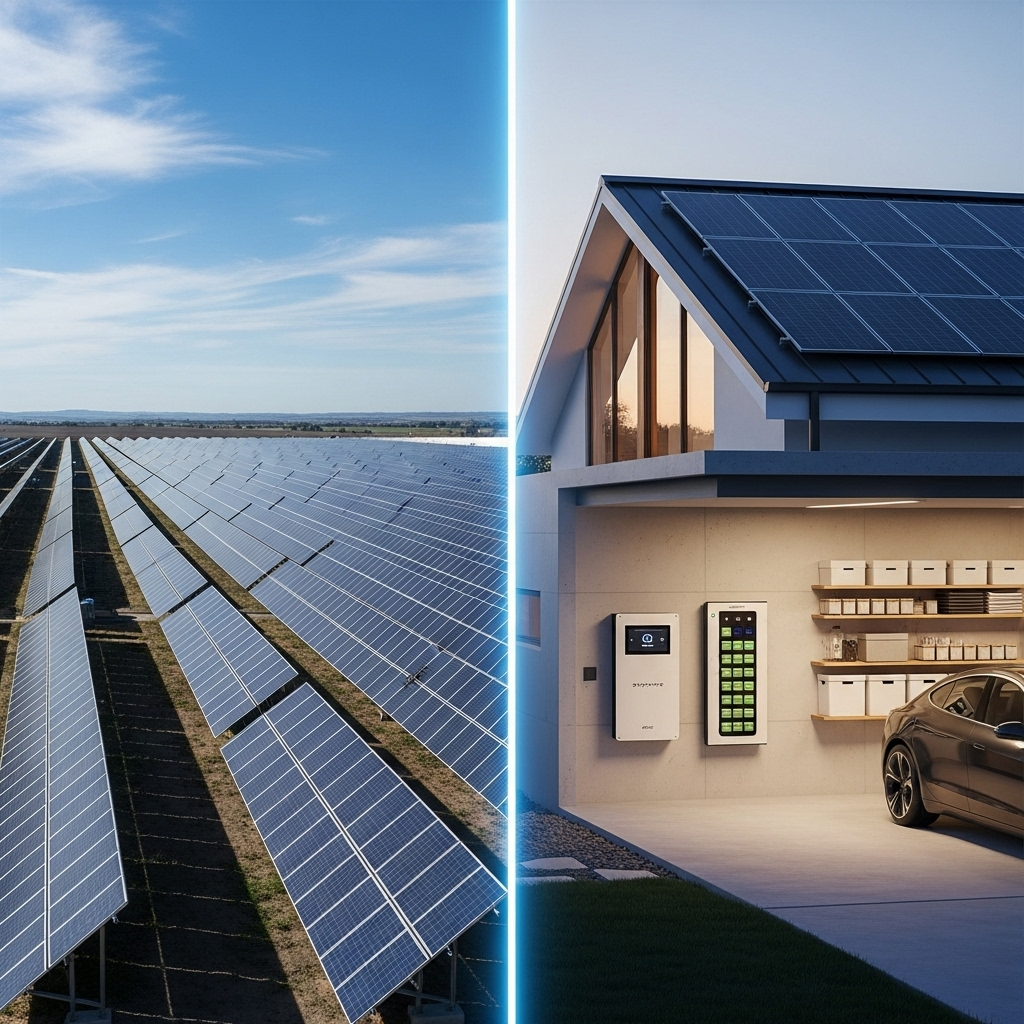Renewable Portfolio Standards (RPS) are a primary driver of clean energy adoption. These state-level policies mandate that utilities generate a specific portion of their power from renewable sources. For many, solar power is the go-to choice. Yet, relying on the sun comes with a fundamental challenge: intermittency. This guide provides a clear framework for leveraging solar-plus-storage systems to not only meet but exceed RPS compliance goals, turning a regulatory requirement into a strategic asset.
Understanding the RPS Landscape
Renewable Portfolio Standards are not uniform. They are policies established at the state or regional level, each with unique targets and timelines. For example, some states may require 50% renewable energy by 2030, while others aim for 100% by 2045. This policy-driven push is a global phenomenon. According to the International Energy Agency's World Energy Investment 2023 report, new policies in the United States, Europe, and China are significantly boosting investment in low-emission power, with targets like the EU's goal to raise its 2030 renewables share to 45%.
The Central Role of Solar in Meeting Mandates
Solar photovoltaics (PV) have become a cornerstone of RPS strategies. Their costs have fallen dramatically over the past decade, and they can be deployed at various scales, from residential rooftops to massive utility-scale farms. This makes solar an economically attractive and versatile option for utilities and project developers aiming to fulfill their renewable energy targets. However, as solar penetration on the grid increases, its intermittent nature—producing power only during daylight hours—presents a significant operational challenge that requires a more sophisticated solution.
The Intermittency Hurdle
The core issue with solar power is the mismatch between its production peak and the grid's demand peak. Solar panels generate the most electricity around midday. In contrast, energy consumption often peaks in the late afternoon and early evening when people return home from work. This creates an imbalance that can strain grid infrastructure and complicate efforts to meet RPS compliance consistently, especially during periods of low sun or high demand.
The Synergy of Solar and Energy Storage for Compliance
Pairing solar PV with an energy storage system (ESS) directly addresses the intermittency problem. This combination creates a reliable, dispatchable energy asset that fundamentally changes how renewable energy integrates with the grid.
How Energy Storage Creates a Dispatchable Asset
An energy storage system, typically utilizing advanced batteries, captures excess solar energy generated during peak daylight hours. This stored energy can then be discharged back to the grid during evening demand peaks or whenever solar generation is unavailable. This capability transforms an intermittent solar farm into a predictable power source. Utilities can 'dispatch' the stored energy precisely when needed, ensuring a stable power supply and making it far easier to meet RPS obligations around the clock.
Choosing the Right Technology: The LiFePO4 Advantage
Not all batteries are created equal. For stationary energy storage, Lithium Iron Phosphate (LiFePO4) batteries have emerged as a leading technology. They offer a superior safety profile due to their excellent thermal stability, significantly reducing the risks associated with other lithium-ion chemistries. Furthermore, LiFePO4 batteries provide a long cycle life, often capable of thousands of charge-discharge cycles while retaining high capacity. This durability makes them a sound long-term investment for utility-scale and commercial projects.
| Feature | LiFePO4 (Lithium Iron Phosphate) | NMC (Nickel Manganese Cobalt) |
|---|---|---|
| Safety | Excellent thermal stability, low risk of fire | Higher energy density, but more prone to thermal runaway |
| Cycle Life | 4,000 - 10,000+ cycles | 1,000 - 2,000 cycles |
| Primary Use Case | Stationary storage, applications where safety & longevity are key | Electric vehicles, portable electronics where space is a premium |
Financial and Grid Stability Benefits
Beyond compliance, solar-plus-storage systems offer additional revenue streams and enhance grid health. These systems can provide ancillary services like frequency regulation and voltage support, which help maintain grid stability and can be sold into specialized markets. As noted in the IEA's report on System Integration of Renewables, flexibility is paramount for integrating high shares of variable renewables. Energy storage is a key source of this flexibility, helping to defer costly grid infrastructure upgrades and improving overall resilience.
Navigating the Regulatory and Project Development Maze
Successfully deploying a solar-plus-storage project for RPS compliance requires careful navigation of regulations and development hurdles. Understanding the policy mechanisms and streamlining the approval process are critical for project success.
Incentives, Credits, and Carve-Outs
Many RPS policies include specific 'carve-outs' that mandate a certain percentage of the renewable energy target must come from solar. These programs often use mechanisms like Renewable Energy Certificates (RECs) to track compliance. A solar-plus-storage project generates RECs from its solar production, and in some markets, the storage component can enhance the project's value or qualify for separate incentives. Federal policies, such as the Investment Tax Credit (ITC) in the U.S., now also apply to standalone energy storage, dramatically improving the economic case for these projects.
Streamlining Permitting and Interconnection
Permitting and grid interconnection have historically been major bottlenecks for renewable projects. Long wait times can delay projects and increase costs. To address this, initiatives are emerging to simplify the process. For example, the U.S. Department of Energy has supported the development of tools like SolarAPP+, which automates permit approvals for residential solar and storage systems. As detailed in a report on the program's success, this tool has already cut project timelines by nearly two weeks. For larger projects, early engagement with local authorities and a thorough understanding of grid interconnection rules are vital.
Designing an Optimal Solar+Storage System
An effective system design is crucial for maximizing both compliance value and financial returns. This involves right-sizing components and selecting technology that ensures long-term performance.
System Sizing and Performance Metrics
Properly sizing the solar array and battery system is a balancing act. The design must account for the site's solar irradiance, the facility's load profile, and the specific requirements of the RPS program. Key performance metrics for the battery, such as Depth of Discharge (DoD) and cycle life, directly impact the project's lifetime and profitability. For a detailed comparison of battery performance metrics, a comprehensive reference on solar storage performance can provide valuable data. Understanding that a LiFePO4 battery can offer over 6000 cycles at 80% DoD is crucial for long-term project viability. You can find more details in this ultimate reference on solar and storage performance.
The Brains of the System: Inverters and EMS
A modern hybrid inverter acts as the central coordinator for a solar-plus-storage system. It manages the flow of electricity between the solar panels, the battery, the building's loads, and the wider electrical grid. This is all orchestrated by an Energy Management System (EMS). The EMS uses sophisticated software to optimize when the battery charges and discharges. It can be programmed to maximize self-consumption of solar energy, reduce peak demand charges, or sell energy back to the grid when prices are highest, all while ensuring RPS compliance targets are met.
Moving Beyond Compliance to Energy Leadership
Meeting Renewable Portfolio Standards is no longer just about checking a box. With the strategic integration of solar power and energy storage, compliance becomes an opportunity. These systems provide the firm, reliable clean power that our modern grid demands. They enhance energy independence, bolster grid resilience against disruptions, and unlock new economic value for project owners. By embracing solar-plus-storage, utilities and developers can lead the transition to a more sustainable and decentralized energy future.
Disclaimer: This article is for informational purposes only and does not constitute legal or investment advice. Please consult with a qualified professional before making any financial decisions.
Frequently Asked Questions
What is a Renewable Portfolio Standard (RPS)?
A Renewable Portfolio Standard (RPS) is a regulation that requires utilities to source a minimum percentage of the electricity they sell from renewable energy sources, such as solar, wind, and hydropower, by a specified date.
How does energy storage help with RPS compliance?
Energy storage helps by capturing excess renewable energy (like solar power during the day) and storing it for later use. This allows the stored clean energy to be dispatched to the grid during times of high demand or when the renewable source is not active (e.g., at night), turning an intermittent resource into a reliable, 24/7 power source for compliance.
Can I get incentives for adding storage to my solar project?
Yes, many regions offer incentives for energy storage. These can include federal tax credits (like the ITC in the U.S.), state-level rebates, and participation in grid services markets where you can be paid for helping to stabilize the grid. These incentives significantly improve the financial viability of solar-plus-storage projects.
What is the difference between an RPS and a solar mandate?
An RPS is a broad mandate for a certain percentage of total energy to come from a variety of renewable sources. A solar mandate, often called a 'solar carve-out,' is a specific part of an RPS that requires a certain portion of that renewable energy to come specifically from solar power.
What are the main challenges in developing solar+storage projects for RPS?
The primary challenges include navigating complex and varied permitting processes, securing grid interconnection agreements with utilities, accurately forecasting energy production and market prices, and financing the higher upfront capital cost compared to a solar-only project. However, declining costs and supportive policies are making these challenges more manageable.





Leave a comment
All comments are moderated before being published.
This site is protected by hCaptcha and the hCaptcha Privacy Policy and Terms of Service apply.